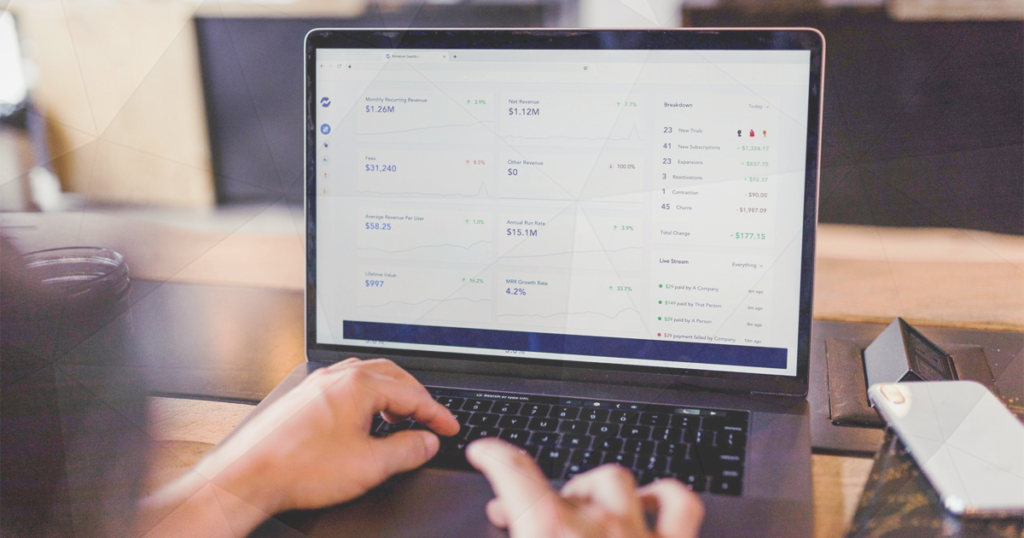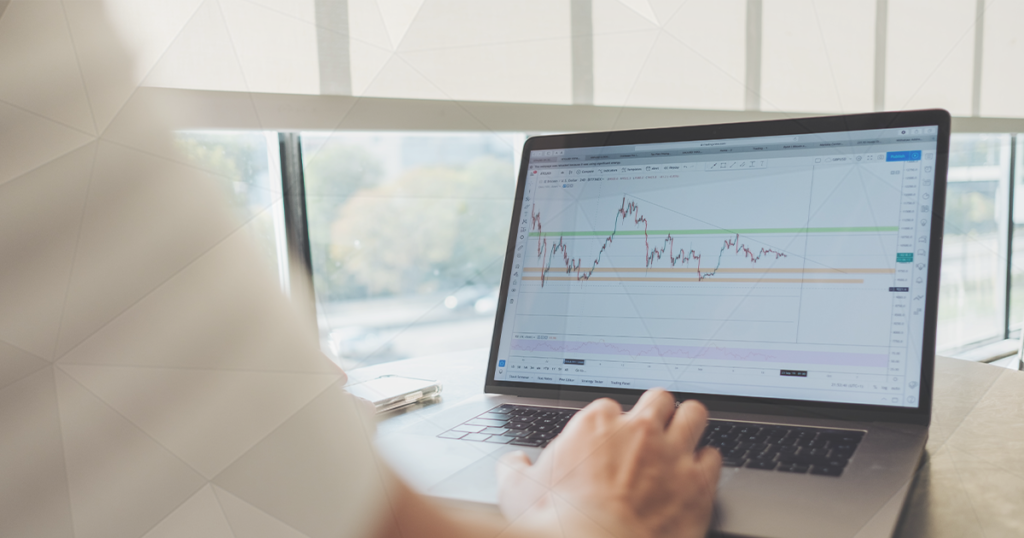A Day in the Life of a Day Trader

Day trading is an extremely popular trading style among retail Forex traders. For many traders, it seems to offer the best of both short-term and long-term trading. It’s not as fast-paced as scalping, but it still provides more than enough trade opportunities to hit the trigger and place orders every day.
Still, day trading requires a specific approach to the markets in order to be prepared to profit from short-term price movements caused by market news and technical levels.
Technical breakouts occur at a moment’s notice, which requires day traders to stick to their price-charts or use pending orders to catch the initial trading momentum as soon as a breakout happens.
Let’s take a closer look at the characteristics of day trading and show you a typical daily routine in the life of a day trader.
What do Traders do When Day Trading?
Just like traders who follow other trading styles, day traders aim to buy a financial instrument at a lower price and sell it later at a higher price for a profit. The trading horizon of day traders is relatively short. They hold their trades intraday and close them by the end of the trading day. Sometimes, in case of promising trade setups, trades can also be held overnight.
The short holding period of trades asks for specific trading tools that day traders need to use when analysing the market. On an intraday basis, technical levels combined with market participants over-reacting to news, bandwagon effects and speculation cause the majority of price movements. That’s why the active management of trades is very important when day trading the financial markets.
Read:
How do you Become a Professional Trader?
Why Forex Trading May Not be for You
Silly Mistakes New Forex Traders Make
Traits of a Day Trader
Given the characteristics of day trading, traders who adopt this trading style need to have specific psychological traits and establish certain habits which can significantly boost their trading performance. Here are some of the most important traits of day traders.
Discipline and Patience: Even though day trading is a relatively short-term trading style, day traders need to be disciplined in employing their trading strategy and patient when waiting for trade setups to confirm. The market noise present in intraday trading can easily lead to losing trades and fake signals, and day traders need have faith in their strategy even in the case of a series of losses.
Read: What is FOMO (And How to Remove it from your Trading Errors)
Risk Management: Day traders need to have strict risk management rules in place to withstand the intraday market volatility. The golden rule in risk management is to risk only a small percentage of your trading account (2-3%) on any single trade and to aim for trade setups that return a reward-to-risk ratio of at least 1. A research conducted by a large Forex broker has shown that traders who take trades with an R/R ratio of 1 or more are significantly more profitable than traders who don’t pay attention to their R/R ratios.
Keeping a Trading Journal: Certain trade setups perform better than others, and day traders can identify their trading mistakes and profitability of trade setups by keeping a trading journal. Many brokers will automatically flag a trader as a day trader if he or she opens at least three trades for five consecutive trading days, which means that day traders have a more than enough input for their trading journal.
At its core, a journal entry should consist of the traded financial instrument, entry and exit prices, reasons why a trade was taken, and its profit or loss once the trade is closed. By making regular journal retrospectives, day traders can have a valuable insight into their own trading patterns which have led to winning or losing trades.
Preparation: Since day trading is a short-term trading style, day traders need to be prepared as much as possible for every trading day. For many day traders, their preparation starts already the evening before by checking an economic calendar for upcoming market reports and flagging potential trade setups on a price-chart.
Have You Read?: The 19-Step Forex Guide for Beginners
Why is Day Trading Different from Other Trading Styles?
The main difference between day trading and other trading styles is in the approach of market analysis. Since day trading relies mostly on intraday trading, day traders have to utilise specific trading tools that differ from tools used by scalpers, swing traders and position traders, for example.
Technical tools, such as trendlines, channels, support and resistance levels and chart patterns play a very important role in day trading. Many day traders rely on breakout setups which occur after an important technical level or chart pattern has been broken.
On the micro-fundamental side, day traders need to be aware of market-moving news reports, such as advance GDP numbers, non-farm payrolls, unemployment rates, central bank meetings, inflation rates and other unexpected market events which can cause a shift in risk sentiment. All these mentioned reports can trigger a chart pattern breakout and form a lucrative trading opportunity for day traders.
Watch: Investing vs. Trading
Daily Routine of a Day Trader
Now that you know what day trading is and how it differs to other popular trading styles, let’s take a look at a typical day trader lifestyle. A day trader’s day usually starts with the morning market scanning and ends with preparations for the next trading day.
1. Morning Market Scanning
After waking up, most day traders start their day with the morning market scanning. They check the overnight price movements and look for important news which could have triggered the underlying price-moves. Forex traders may also look at a currency strength matrix to identify underperforming and over-performing currencies and the current risk sentiment in the market.
Read: 16 of the Most Popular Currencies You Can Trade
The morning market scanning also involves going through price-charts to find potential trade opportunities for the trading day.
- Did a breakout occur overnight?
- Is the price currently making a pullback to an important technical level?
- Should I enter now, wait for additional confirmation or place a pending order?
Those are all questions that day traders need to have an answer to before executing a trade.
2. Execution of Trades
After the morning market scanning is completed and a day trader finds a tradeable setup, it’s time to execute the trade. Day traders will usually find a few tradeable setups each day. When executing a trade, it’s very important to pay attention to the position size in order to stay inside your risk management boundaries.
An easy way to calculate your optimal position size is by using the size of your stop-loss level.
3. Placement of Pending Orders
As an alternative to market orders, day traders often use pending orders when a breakout setup is still unconfirmed, i.e. the breakout hasn’t happened yet. In the case of a potential breakout to the upside, day traders may use buy-stop orders which would be placed above the current price-level.
In the case of a breakout to the downside, a sell-stop order could be used which would be placed below the current price-level. Day traders can also successfully trade pullbacks with the use of buy-limit and sell-limit pending orders.
4. News-Following and Trade Monitoring
Once all trades are placed, day traders have to actively manage their trades by following the price-action and important market news. If a trade doesn’t perform as expected in the next hour or two, simply close it. It’s better to take a small loss than to wait for a losing trade to reverse.
News reports can create high volatility, especially if the actual numbers differ from market expectations to a large extent. High-impact reports, such as non-farm payrolls, can move the market hundreds of pips in case of a surprise. That’s why many day traders avoid trading around the release of high-impact news.
Read: Which is Better? Technical vs. Fundamental Analysis
5. End of Trading Day: Closing of Remaining Trades
When the trading day comes to an end, day traders close their active positions – hopefully for a profit. Don’t worry if you have a losing day from time to time then price-movements on short timeframes can be erratic. Day traders can’t do anything about it. Instead, measure your trading performance over longer time horizons, such as weekly and monthly.
6. Preparation for the Next Trading Day
During the trading day, day traders are already preparing for the next day. Maybe there is a setup based on a chart pattern or trendline, in which a breakout may occur tomorrow or over the following few days. Day traders mark those setups and keep an eye on them so they’re prepared once the breakout happens.
Day traders should also check an economic calendar again and mark high-impact news releases which are scheduled for the next day. These events may also accelerate a breakout which hasn’t happened yet.
Read: Checklist for a Day Trading Setup
Day-Trading FAQ
How Much Do Day Traders Make per Year?
While it’s quite difficult to give an exact number, many day traders succeed to make a living on day trading. The actual day trader salary depends on many factors, such as the experience of a day trader, the strategy used and the efficiency of a day trader’s risk management rules, to name a few. Read our guide on the average day trader salary here.
Leverage also plays an important role in the profitability of day traders – but bear in mind that leverage can magnify both your profits and losses.
Do Day Traders Trade Every Day?
Most of the time, yes. The overwhelming majority of day traders place a few trades every single day. Nevertheless, there are periods when the market simply doesn’t reveal any tradeable setups for the day. In that case, it’s a wise decision to stay at the sideline and patiently wait for a trade setup to confirm.
Read: Situations When You Shouldn’t Trade Forex
How Many Hours Does a Day Trader Work?
While day trading isn’t as fast-paced as scalping, it’s still a quite busy trading style. Day traders need to actively manage their trades, as markets can exhibit significant volatility over the short holding period. Add to this the morning market scanning and the evening preparation for the next trading day, and day trading can be considered a full-time job.
Read: Can You Trade Forex While Working Full Time?
How Much Money Do You Need to be a Day Trader?
According to the Financial Industry Regulatory Authority,
“… a pattern (stock) day trader must maintain a minimum equity of $25,000 on any day that the customer day trades. The required minimum equity must be in the account prior to any day-trading activities. If the account falls below the $25,000 requirement, the pattern day trader will not be permitted to day trade until the account is restored to the $25,000 minimum equity level.”
However, most brokers don’t have a threshold amount for day traders who aim to trade on CFDs, including CFDs on currencies, stocks or commodities. Still, it would help if you maintained a sufficient amount of free margin to withstand negative intraday price fluctuations and avoid a margin call.





